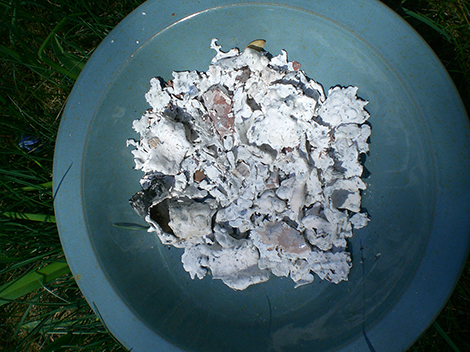
For many years, the Highland Lake Protection Association (HLPA) has sold flares for the July 4th weekend “Flare Show.” It has been an important annual fundraiser, selling approximately 100 flares.
Last year, a handful of HLPA members hired ChemServe, an environmental analyst recommended by the state, to analyze the ash created from the flares.
The report showed that one flare produces 1.1 pound of ash and 400 mg/Kg of perchlorate. Perchlorate is both a naturally occurring and man-made chemical that is used to produce rocket fuel, fireworks, flares, and explosives. Perchlorate can also be present in bleach and in some fertilizers.
Scientific research indicates that this chemical can disrupt the thyroid’s ability to produce hormones needed for normal growth and development. The ash from a single flare would contaminate 50 gallons of water above the drinking quality limit. There are other notable pollutants added to our lake from each flare, including chromium, copper, zinc, nickel, and phosphorous.
Due to the volume of water in Highland Lake, the pollutants added by the flares from this fundraiser will not create a sudden or severe impact. But we know that the ash from the flares is not inert. I believe this information is important to have in order for each of us to make choices as to how we chose to treat the lake.
The HLPA voted last year to continue the flare program. They also voted to offer solar lawn lights as an alternative fundraiser. The mini solar light will not substitute the bright 20 minute blaze of a flare, however, the solar light is great for marking docks, walkways, etc. and will last all summer! I’ve had my solar lawn lights for several years, storing them inside in the winter. The solar lights will sell for the same price as the traditional flare.
It is important when burning the traditional flares to surround the flare with something, like aluminum foil at a radius of at least 16 inches. This will help in collecting the ash. When cool, it can be placed in the household trash. If not collected, the ash dissolves quickly into the soil and water.